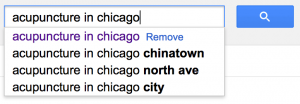 The year was 2008. Social media was just ramping up. Twitter was an infant and people were still wondering why Google bought YouTube. MySpace was starting to wither under News Corp and Facebook was on the rise to supplant it. Read more
The year was 2008. Social media was just ramping up. Twitter was an infant and people were still wondering why Google bought YouTube. MySpace was starting to wither under News Corp and Facebook was on the rise to supplant it. Read more
Archive for Working On It
Why I Built Scrypter
Buying the (Blueberry) Farm
One of the more interesting decisions I’ve made was buying into the blueberry farm. It came about “innocently” enough. My brother and father conspired to pitch an investment opportunity in the form of blueberries.
From Email to Farm

By 2006 the business was humming along. We had several clients and were expanding into other opportunities. There was a substantial surplus of cash that we opted to take out of the business. This allowed me to pursue other ventures, like farming. Internet technology and farming go hand in hand, right? Read more
How is an RTB winner chosen in the case of identical bids?
When multiple advertisers are bidding for a certain (impression) and more than 1 enter the same bid amount, (each) being the highest, how does the RTB (auction) determine which ad should be displayed.
This question was asked on quora, below is my answer.
 Identical bids are not unheard of, but they are rare. Bid prices are presented as a CPM value with up to five decimal places. That means that the actual impression can bid upon with precision down to eight decimal places. So in that rare event, when there are two or more matching top bids, the winner is chosen at random. This is only the tip of the iceberg, though.
Identical bids are not unheard of, but they are rare. Bid prices are presented as a CPM value with up to five decimal places. That means that the actual impression can bid upon with precision down to eight decimal places. So in that rare event, when there are two or more matching top bids, the winner is chosen at random. This is only the tip of the iceberg, though.
Features are being added to RTB systems that allow for preferential treatment of preferred DSPs, agencies, trading desks and even advertisers. Deals that are struck between site owners and buyers are being executed through the RTB infrastructure. Those deals can supersede standard auction mechanics, resulting in a winning ad from a preferred partner in the presence of matching (or higher) bids from other parties.
As time goes on and the RTB system is exploited for more and more features, having equal footing in an auction will be more rare, relatively speaking. There will always be general auctions where no bids are given special consideration. We are, however, entering an era where premium inventory is available to buyers through RTB. With that inventory comes a more carefully crafted environment to buy and sell.
SEO: Simple Search Engine Optimization for Small Business
Search engine optimization should be used in conjunction with online advertising to drive more users to your site. It can, in some cases, allow a small business to reduce the month-to-month costs of advertising by bringing “organic” (unpaid) traffic to their web site.

Small business advertising
Rather than Small Business Advertising, I was going to title this post, “Eating your own dog food,” but I decided that a more descriptive title would get the benefit of SEO. I recently took on the task of advertising for my wife’s small business, here’s our story.
My wife’s acupuncture practice recently moved into a larger space; her patient capacity almost doubled overnight from one to two treatment rooms. I say “almost” because she’s still just one practitioner. With acupuncture, once the patient has been needled, they simply rest comfortably in pin-cushion mode. The practitioner doesn’t need to be in the room. That’s where my wife takes the opportunity to start treatment on a patient in room number two.
I took it upon myself to do some online advertising for her practice to fill up that second room as frequently as possible. Now, my wife is not your typical acupuncturist. She’s an herbalist, a holistic medicine practitioner and, most uniquely, an MD. One would think that her résumé would do the marketing for her. That’s not the case, obviously. We have to let people know just how fabulous she is. So, here’s the long story of how I used my background in advertising, my wits in video production and my fabulous wife’s personae to kick off her marketing push for the new office. Read more





